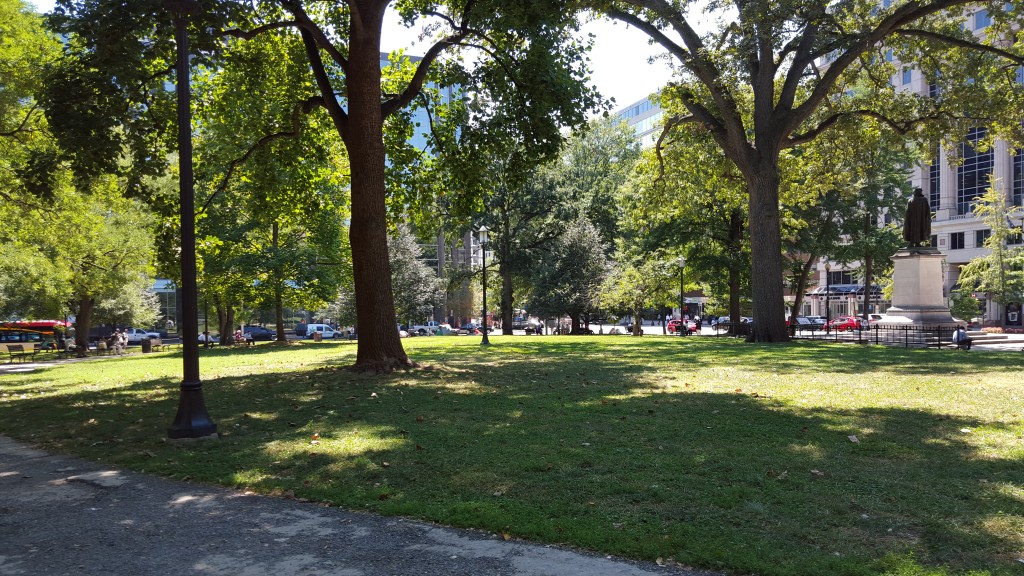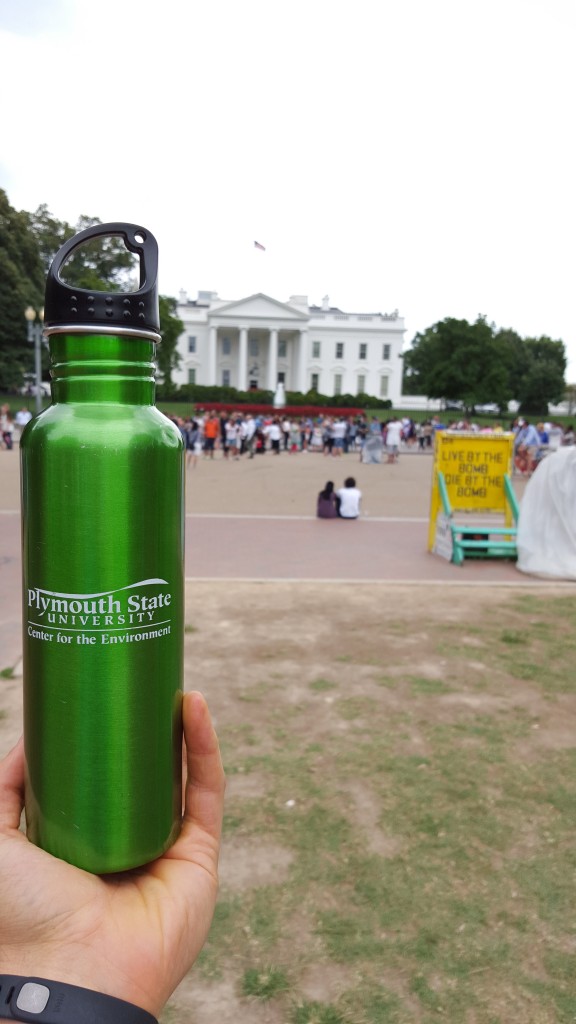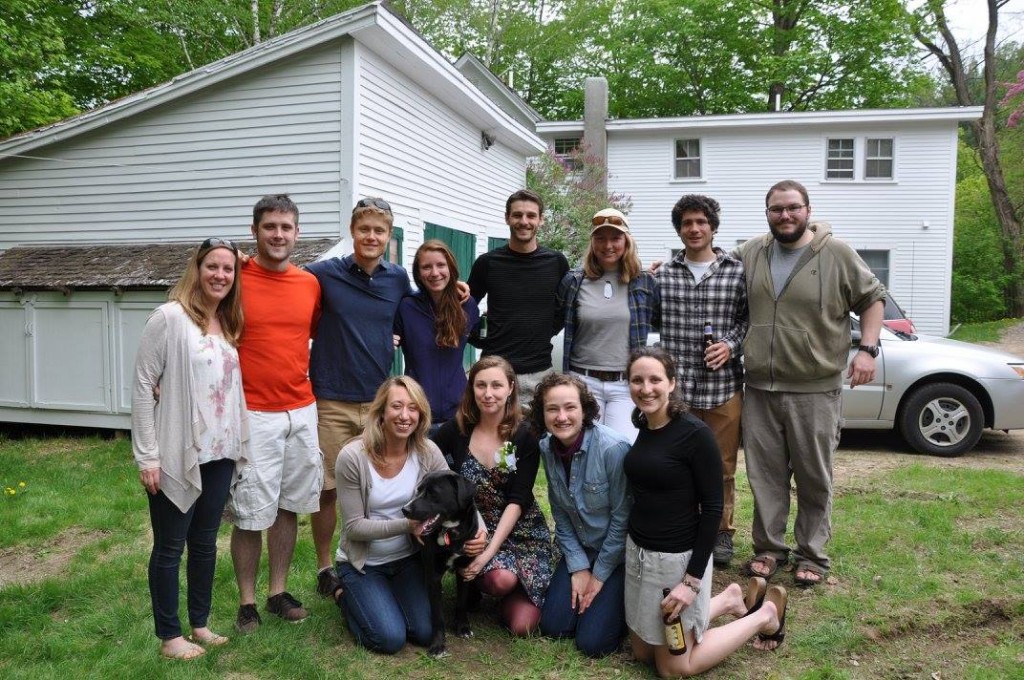Around this time in August two years ago seven fellow new-kids and I huddled in a full and startlingly muggy Russel House conference room, munching on pistachio muffins and sipping coffee. It was kick-off of the MS ESP new student orientation 2013. We had each been tasked with presenting ourselves to the program in a single-slide presentation, one of the most stressful slides I’ve made to date. A year later we attended orientation 2014 as a group of pals, battle hardened by a course in Law & Policy and a New Hampshire ‘polar vortex’ winter. That year we sat back and observed others navigate the awkwardness of new-student ice breakers as we welcomed five new members to the RadGrad roster. This August I sit 533 miles southwest of Plymouth at my desk on 14th and L Street in the U.S. Capitol. Almost two months into my position at American Rivers, I still feel pretty fresh out of the Northeastern woods as I reflect on the past two years in graduate school and Plymouth life that got me here.
I feel that I should start this post by announcing to those currently (and soon to be) in Boyd 219 Grad Office that there is life after thesis! I know that it doesn’t seem plausible at times, but there’s a whole bustling world out here that’s thrilling to be a part of. That being said, flying the Plymouth-coop isn’t without sentimental looks over the shoulder or jarring come-to-realities. For instance, late succession doesn’t always mean a quiet hardwood-spruce-fir forest, in some places this refers to the stand of trees and manicured bushes down the block. Also, trail-ready shoes aren’t acceptable daily wear everywhere, and terms like “old-growth,” “nonpoint source,” or “watershed” aren’t necessarily appropriate conversation topics at all happy hours. These things I’m learning the hard way. All sorts of new things balance out these changes, however. One of the most exciting has been meeting people on a daily basis who are just as passionately driven by the things they study and work on as we are on ours, many of which I know nothing about. Additionally, I have an array of options from which to buy my groceries and I can count on one hand how many times I’ve used my vehicle since July 1. So hold steady rad grads and keep your eyes on the prize, it all counts for something.

A little bit of the ‘old growth’ system in Washington, D.C. Somewhere along the spectrum of the mosaic steady state… A daily lunch spot at Franklin Park on 14 and K St.
I’m now the new kid on the block at American Rivers, a river conservation and policy organization headquartered in Washington, D.C. with field offices in major river basins across country. A non-profit environmental organization, American Rivers’ core mission is to protect wild rivers, restore damaged rivers, and conserve clean water for people and nature. As a research fellow, I’m fortunate to have the opportunity to directly apply and continue much of my graduate research on flood adaptation and ecosystem services to a new project. Specifically, American Rivers is interested in developing a new floodplain restoration program across the country, expanding their current flood policy portfolio to include on the ground floodplain projects. Well known for dam removal work (propelling over 200 dam removal projects since 1973), the organization would like to become equally effective at floodplain reconnection to rivers, restoration, and information sharing. Working within the conservation and restoration teams, I’ll be contributing to the development of this new program internally by composing a framework for restoration, and by implementing a pilot floodplain restoration project within a river system of focus. While the exact trajectory of this two-year project is still unfolding, I’m excited and fortunate to have Shannon Rogers, my graduate adviser at PSU, on-board as a continuing colleague and adviser in this project.
The transition from student to work world has been palpable. I’m finding that in many ways we’ll probably always be a ‘student’ of sorts at whatever we’re doing in career and life. This is good because after 18+ years of schooling, being a student is likely what many of us do best. Now outside of the campus, I’m learning how to apply myself towards projects that are collaborative and application driven, and measured by outcome (AKA: not working for a grade or a thesis product). The good news is that much of what we focused on in the ESP MS program was geared towards these same ends. Every course I took had some avenue for incorporating a community or regionally applicable project. The first assignment I was handed in my current position was to carry out an assessment of landcover and values of floodplain properties along a segment of the Neuse River in Raleigh, and to test a scenario of landcover change on nutrient loading- not unlike something I might have been assigned a few months earlier in grad school! Being able to tackle such work and then communicate what it means to those who aren’t familiar with it (also part of what I was tasked with), is something I’m very glad to have done in our MS program. Those projects are also great talking points and resume bullets for other pursuits.
This week I’ll be trading out my New Hampshire license plate for a District of Columbia version. This is a very bittersweet transition. The memories, experiences and friendships built during my time in Plymouth are too significant to try and communicate, so I won’t. Graduate school is such a unique time in life, when nothing seems too permanent, except a growing view of the world and the sense of opportunity ahead. I will say that I have no doubt I’ll be seeing many Plymouth folks again, and that what I learned in life and work while there will contribute to my life forever. I’m so excited to follow up with everyone over the years, and to see where life’s trails take us each.
In reflection of my time in Plymouth I’ve put together a few numbers, in true science form. I think they give a nice look into the interdisciplinary nature of attending the ESP graduate program at PSU.
613 – Emails sent to my adviser (just sent, not received)
352 – Miles hiked during two years in New Hampshire[1].
101 – The best room in Boyd for conference calls, quiet work, or group work, with a ton of natural light and a killer view of the Whites.
42 – Minute drive to get to Concord from Plymouth. A trip made periodically for work, Nutella milkshakes, climbing walls, and other needs.
29 – 4,000 footers hiked (19 I’m coming back for).
18 – Stored GB of graduate work related data.
17th – Day of May 2015, the last spring hike that still required post-holing through thigh-deep snow, atop the Twins.
12 – Miles, the distance of the Squam Ridge Trail Race in September completed by a crew of ESP students and faculty. Will we be represented again this year?
10 – Computer monitors in the grad student office for coursework and research use, with many hours stared into each.
9 – Graduate courses completed.
8 – Grads in my ‘13-15 cohort.
7.99 – $ cost per lb. of bulk raw almonds at Plymouth’s local organic goods store when I moved to town in 2013. ($10.99 per lb upon leaving, influence of CA drought?)
7 – Official snow days or delays over two winters in Plymouth (in orientation we we’re told to never expect one).
6 – Poster sessions presented at (also the number of times on top of Mt. Washington).
5 – NH breweries added to my favorite beers list; Smuttynose, Moat, Woodstock, Tuckerman’s, 603.
4 – Skis acquired through second hands to tackle NH’s endless cross-country ski trails.
3 – $ the cost of the monthly featured regional brew at Biederman’s.
2 – times attended the Highland Games in Lincoln, NH (highly recommend).
1 – Thesis completed and Master’s Degree received.
-10°F – lowest temperature I ever saw my car record.
I hope nobody hesitates to get in touch in the future, whether to catch up or for a place to stay in Washington!
Cheers and happy trails.
Jonathon
[1] Estimated by assuming average 4,000 ft. mountain hike = 8 miles round trip, (29 peaks, 5 peaks were repeated, 3 Washington ascents) + ~8 Rattlesnake Rumney hikes (2 mi) and ~12 assorted non 4,000 foot hikes (4 miles average round trip). = 352 miles.


